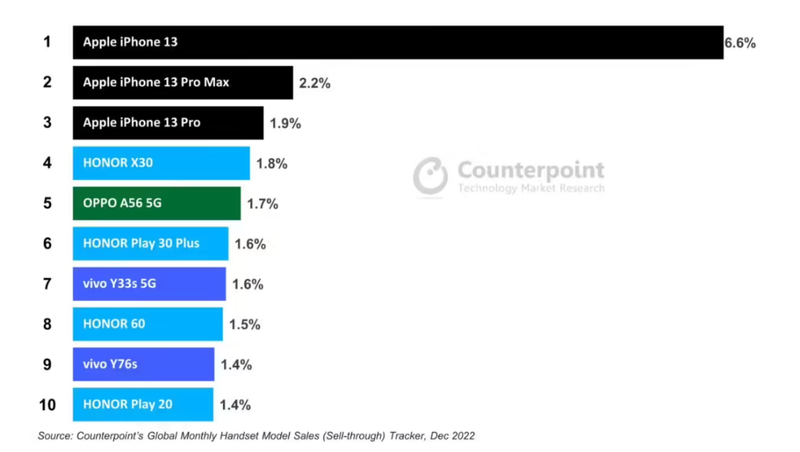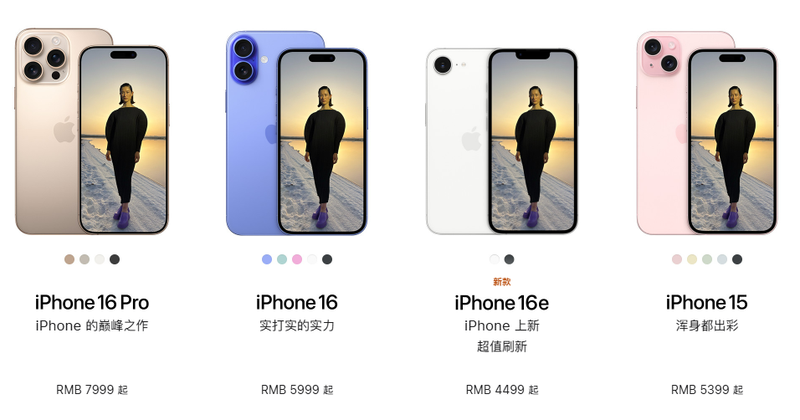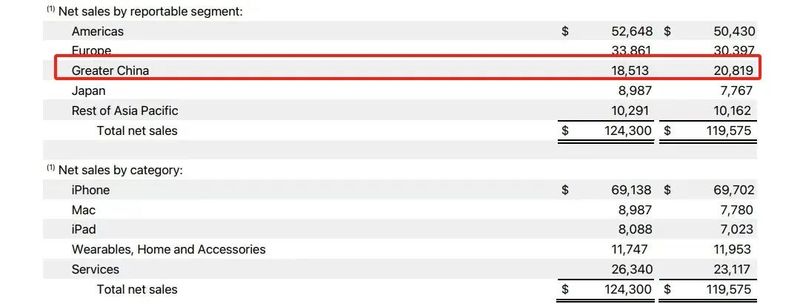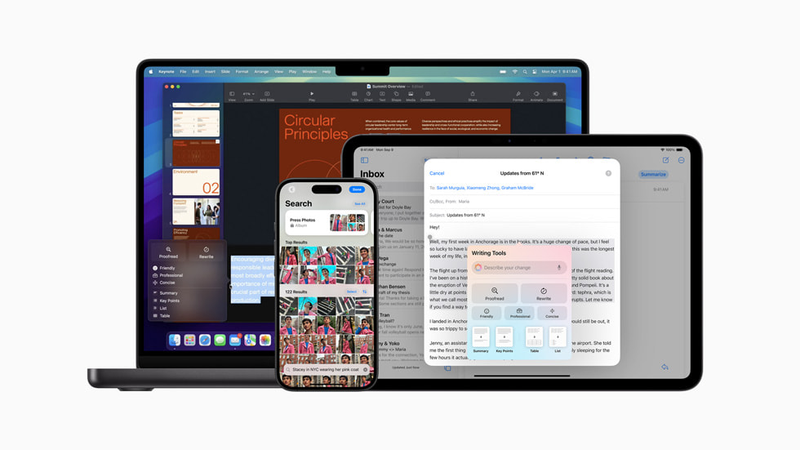For Apple today, although the new iPhone16e product already has the dual buff of “AI function + price reduction”, judging from the current competitive landscape, it may still be a bit difficult to rely on it to drive sales in the China market.
iPhone 16e, Apple’s AI testing machine in China
Wen| A slightly larger reference to Fu Rao
Just five months later, a new member, the iPhone16e, was added to the iPhone16 series.
In terms of pricing, the prices of the 128GB, 256GB and 512GB version of the iPhone16e are 4499 yuan, 5499 yuan and 7499 yuan respectively. Coupled with the national subsidy policy of 500 yuan, which means that you can buy a new machine for a minimum of 3999 yuan.
Judging from the new iPhone products over the years, such a low price directly compares to the iPhone SE series.
At first glance, this operation is very similar to Apple ‘s strategy of trading low prices for sales in the China market in the second half of last year, but the iPhone 16e may not be able to use low prices to boost performance. The performance of the low-priced iPhone SE series in the China market has never been ideal.
Apple will launch the second-generation iPhone SE series in 2020, with a minimum price of 3299 yuan. According to 2021 Q4 data given by market research agency Counterpoint, the market with the highest proportion of sales in this series is Japan, with an overall proportion of 33%. The second largest market is the North American market, with an overall proportion of 24%, while the overall proportion of the China market is 8%.
The same is true for Apple’s third-generation iPhone SE series launched in 2022. According to data released by Counterpoint Research, in terms of sales in the China market in 2022, the iPhone 13 is the best-selling smartphone model, contributing 6.6% of the market share, followed by the iPhone 13 and iPhone Pro Max. The third-generation iPhone SE series products are not among the top ten.

In other words, cheaper iPhones do not sell better in China.
The price cut does not seem to have significantly improved Apple’s performance in China.
Since May 20 last year, Apple has reduced prices for the iPhone 15 series, with the highest discount for the iPhone 15 Pro model reaching 2300 yuan; during the Double Eleven period, it has reduced prices again for the iPhone 16 series, and the highest discount exceeded 1,000 yuan.
But even so, according to a recent report released by market research firm Canalys, Apple’s iPhone shipments in China still fell by 25% in the fourth quarter of 2024, when price cuts were frequent. Starting from the fourth quarter of 2023, this is the fifth consecutive quarter that Apple’s revenue in Greater China has declined year-on-year.
From the overall market perspective, Apple’s market share in the domestic mobile phone market for the entire year of 2024 is 15.6%, ranking third, behind vivo (17.2%) and Huawei (16.6%).
Apple needs a new trick.
Judging from the newly released iPhone 16e, the keyword should be AI.
In terms of functional attributes, there are many obvious improvements in the iPhone 16e hardware configuration, software experience and AI applications. For example, the new machine is equipped with the same A18 bionic chip as the iPhone 16, changed to a USB-C interface, and has a longer standby time.
But perhaps a more important point lies in the AI function. More accurately, it is Inclusive AI.
This model, which starts at 4499 yuan, supports Apple Intelligence, which is 900 yuan cheaper than the iPhone 15, which does not support Apple Intelligence. It can be said that this should be the cheapest Apple AI phone users can use so far.

It is not unreasonable for Cook to attach so much importance to AI functions in the China market.
You know, in the fourth quarter of last year (the first quarter of fiscal 2025), regions that have already implemented AI functions such as the Americas, Europe, Japan and other Asia-Pacific regions all hit new revenue records.
This also once again confirms Canalys analyst Runar Bj rhovde’s forecast for Apple around October last year. Although the initial response was modest, as Apple Intelligence expands into new markets, it is expected that the iPhone 16 will help Apple continue to maintain strong growth in 2024 and extend its development momentum into the first half of 2025. rdquo;
But this does not include the China market.
Apple’s revenue decline in the China market continues. Apple’s first-quarter financial report for the fiscal year 2025 showed that revenue in China, Apple’s third largest source of revenue, decreased by 11% year-on-year.

The reason for this is that on the one hand, Apple is facing the rise of competitors such as Huawei.
But on the other hand, Apple also attributed part of the decline in sales in China to the poor performance of the iPhone 16 series, because as a mobile phone that focuses on AI, China consumers cannot experience full AI functions. This is also the reason why Apple believes that the iPhone 16 has encountered a Waterloo in the China market. After experiencing a brief surge in sales three weeks after its launch, the iPhone 16 quickly fell cold again. Total sales in China in the fourth quarter plunged 25% year-on-year.——
But can AI functions really change Apple’s decline in China?
The result is hard to say. At least so far, AI functions have not become a major selling point for any mobile phone brand, and few users have specially changed their phones in order to experience new AI functions.
Looking at domestic mobile phone brands, many manufacturers have already implemented AI layouts: Huawei, Xiaomi, vivo, OPPO, Glory, etc. quickly connect to their respective cloud or end-side AI models, covering various application scenarios from retouching, Q & A to office.
Overall, the AI functions of domestic mobile phone brands focus more on image processing, text generation, etc. For example, the imaging functions of OPPO and OnePlus both include one-click AI de-reflection, AI elimination, AI retouching, etc. The glorious Magic7 series has AI face changing, magic retouching and other functions, while Xiaomi mobile phones were launched in March last year. AI functions such as Magic Elimination Pro and Smart Image Expansion were launched.
At least until now, AI still plays an auxiliary role in the competition for smartphones.
So, if the iPhone 16e series implements AI functions in China, can the situation change?
It’s hard to say.
From a slightly larger perspective, Apple’s AI features have two major advantages: one is cross-application collaboration, and the other is access to ChatGPT.
For example, Apple emphasizes that its new AI feature brings generative AI to iPhones, iPads, and Macs, and that new system-wide writing tools in iOS18, iPadOS18, and macOS Sequoia will help users communicate more effectively, allowing them to rewrite, proofread, and summarize text in almost any application, including mail, memos, Pages, and third-party applications.
Simply put, Apple users can conduct better text collaboration across terminals.

This was once an advantage of Apple’s ecology.
But now, this barrier is being broken by domestic mobile phones.
According to China Entrepreneur Magazine, on OPPO devices, it is already possible to transfer files and pictures between OPPO devices and Apple devices through the one-touch transfer function; the Xiaomi 15 series also fully supports the Apple ecosystem and has developed two major applications, cross-screen collaboration services and Xiaomi Mutual Transfer, to transfer files with Macbooks, iPads, and iPhone, and even directly view documents in more than 100 Apple-exclusive formats such as Keynote, Numbers, and Pages. In addition, Xiaomi Miaoxiang desktop can also be used smoothly on Mac and supports gesture operations.
Second, Apple’s advantage of accessing ChatGPT has disappeared as various domestic mobile phone brands connect to DeepSeek.
Since Huawei officially announced the connection to DeepSeek on February 5, most domestic mobile phone manufacturers, including Glory, OPPO, Meizu, Nubia, vivo, etc., have announced the connection to DeepSeek-R1, which will help improve AI task processing efficiency.
For Apple today, although the new iPhone16e product already has the dual buff of AI function + price reduction, judging from the current competitive landscape, it may still be a bit difficult to rely on it to drive sales in the China market. nbsp;
It is not allowed to reproduce at will without authorization, and the Blue Whale reserves the right to pursue corresponding responsibilities.



